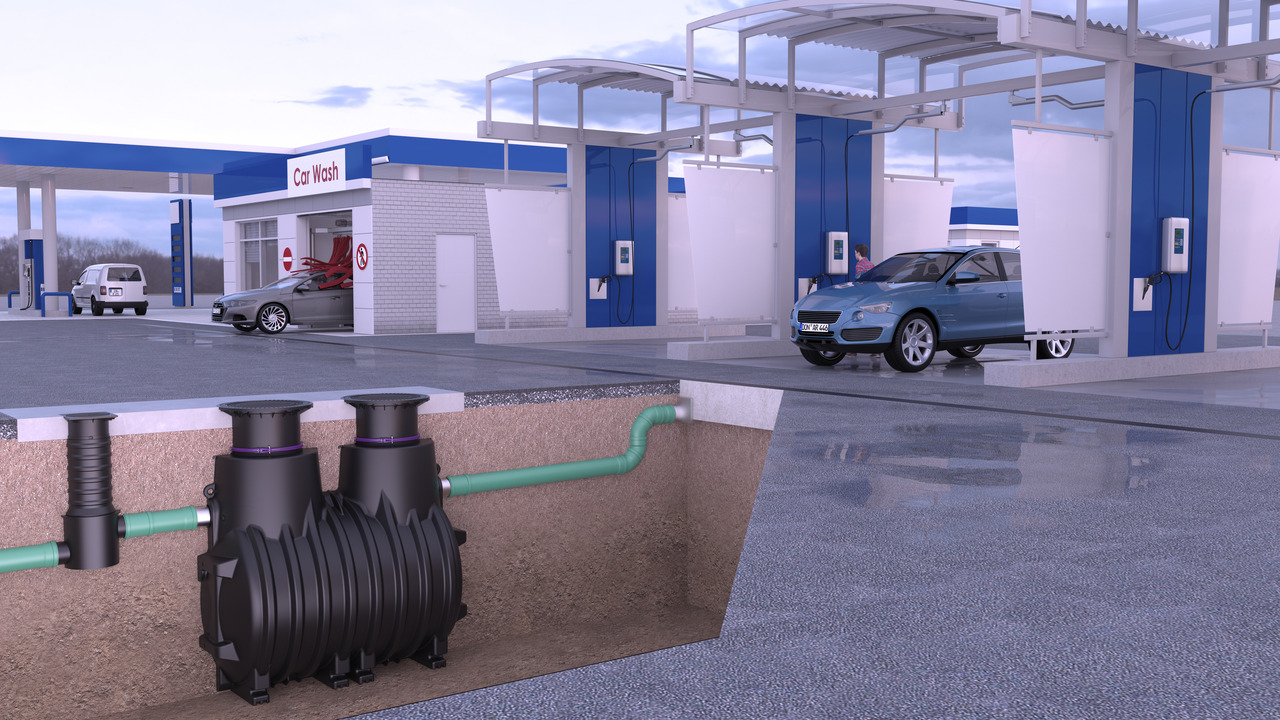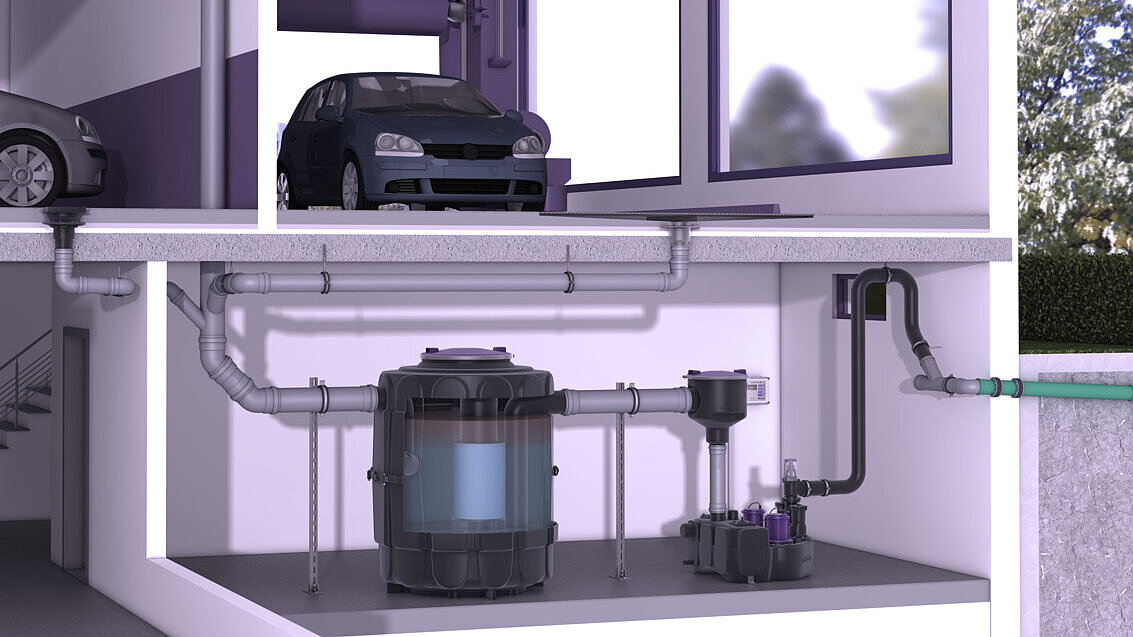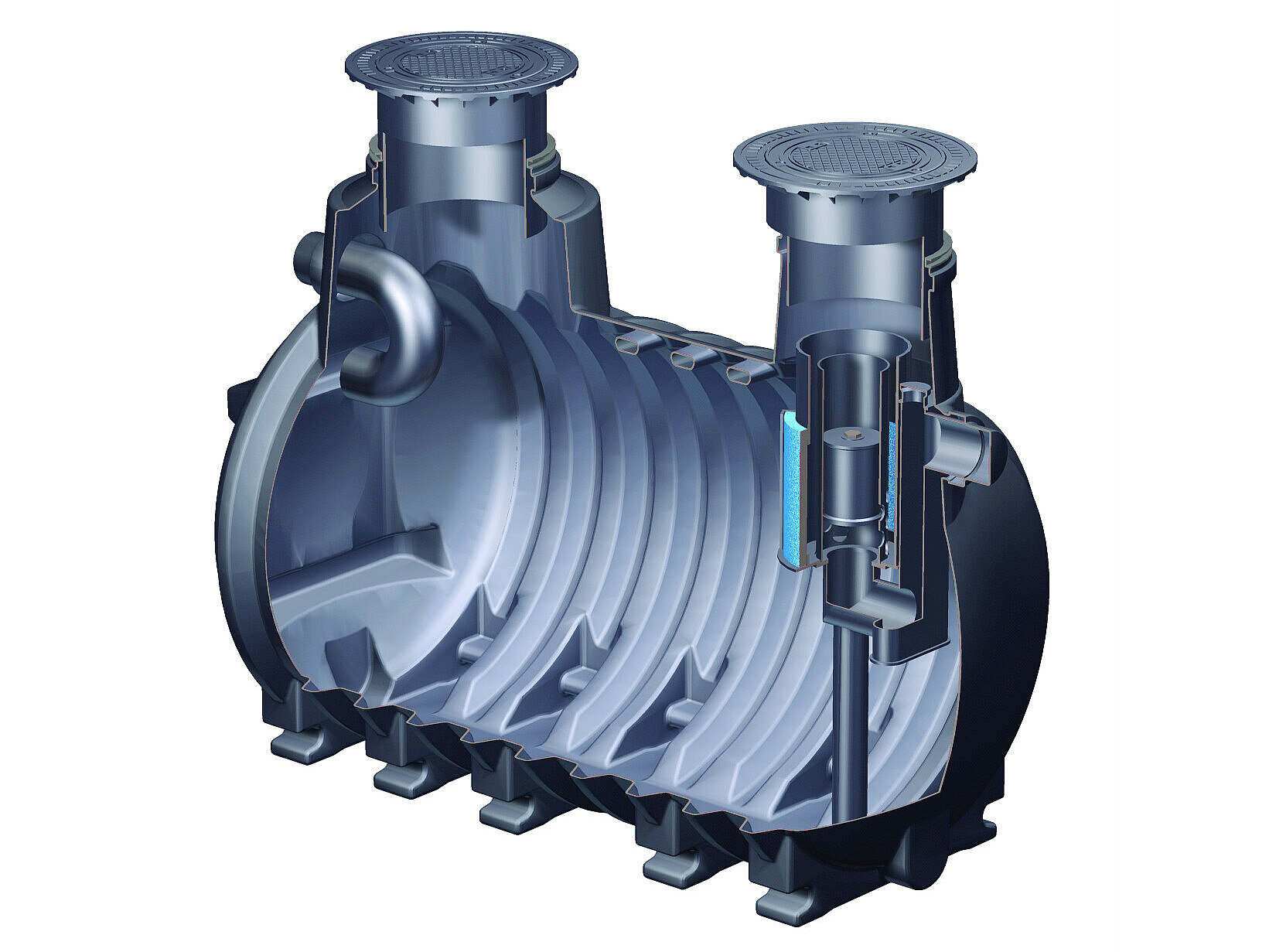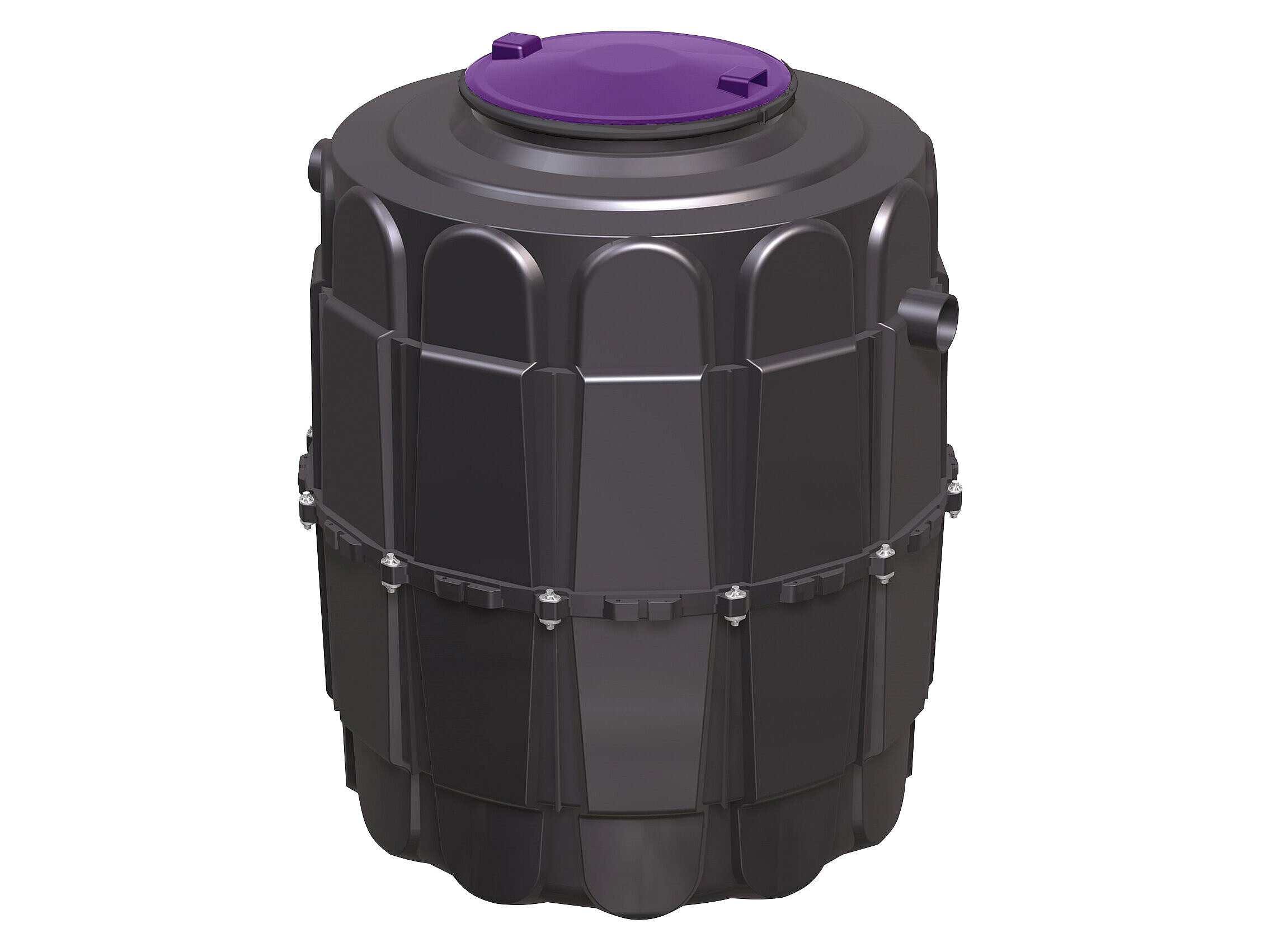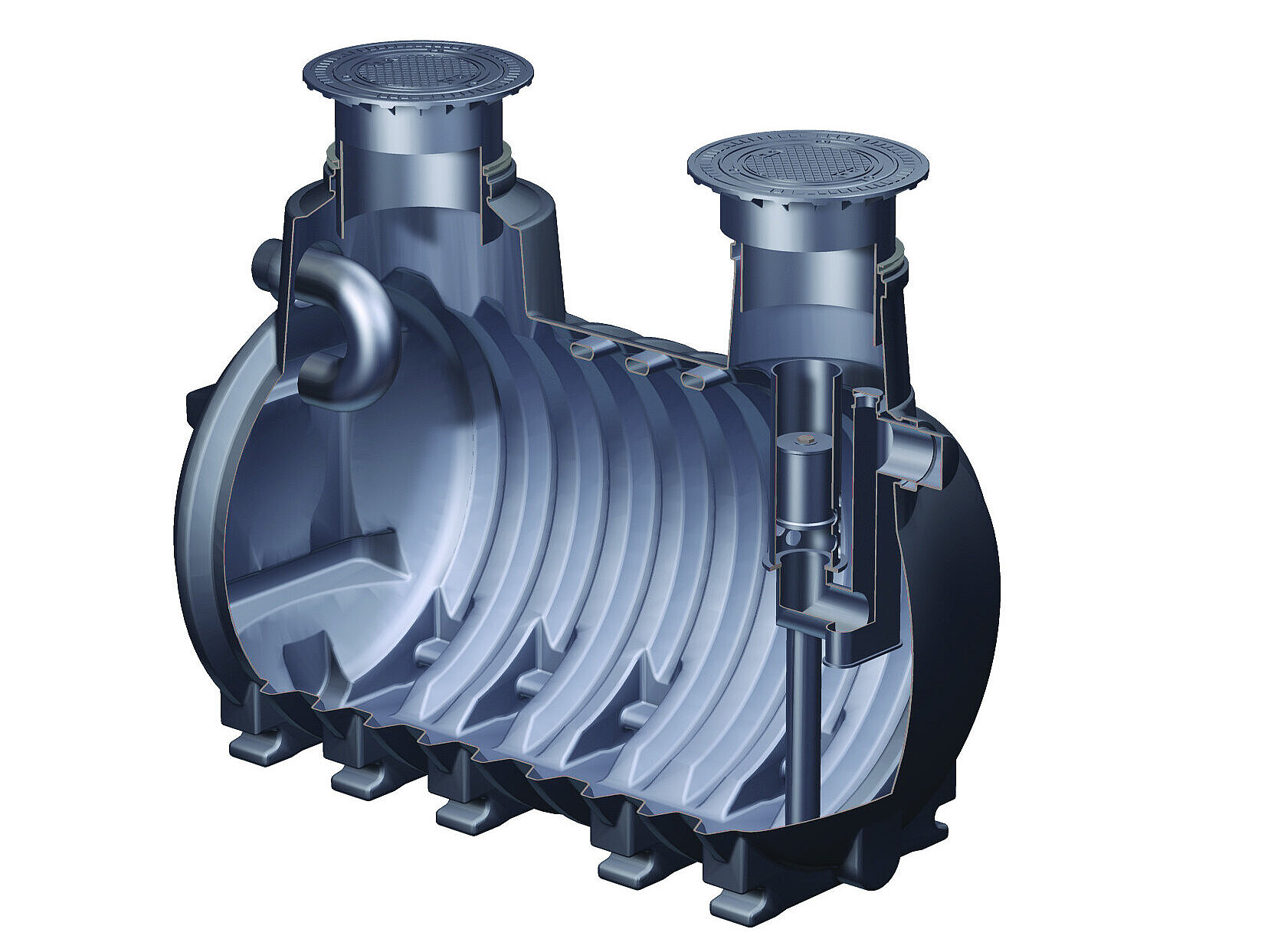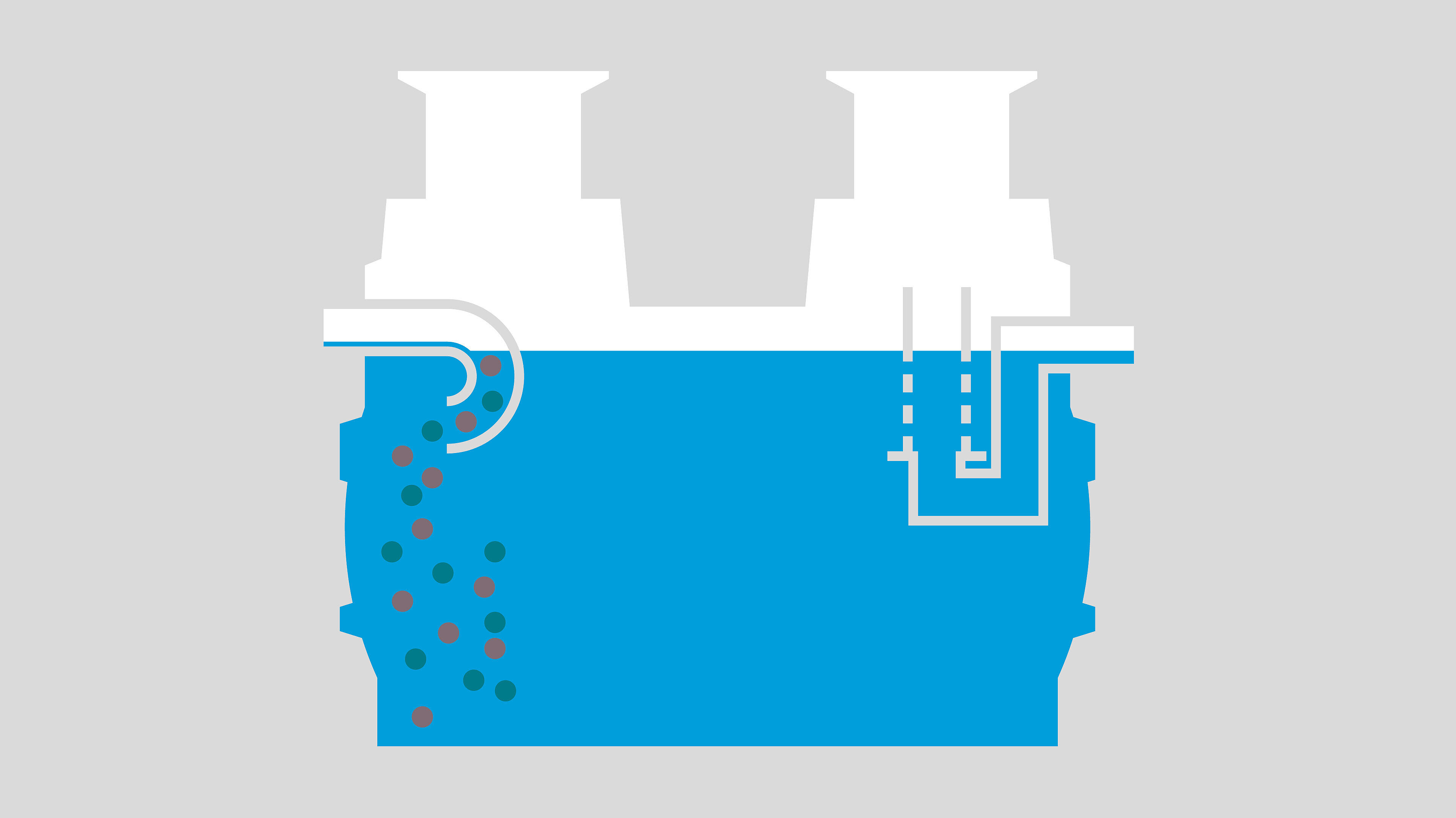
Wastewater discharge
The wastewater is routed into the light liquid separator, where the flow is largely stilled due to the large volume of the tank.
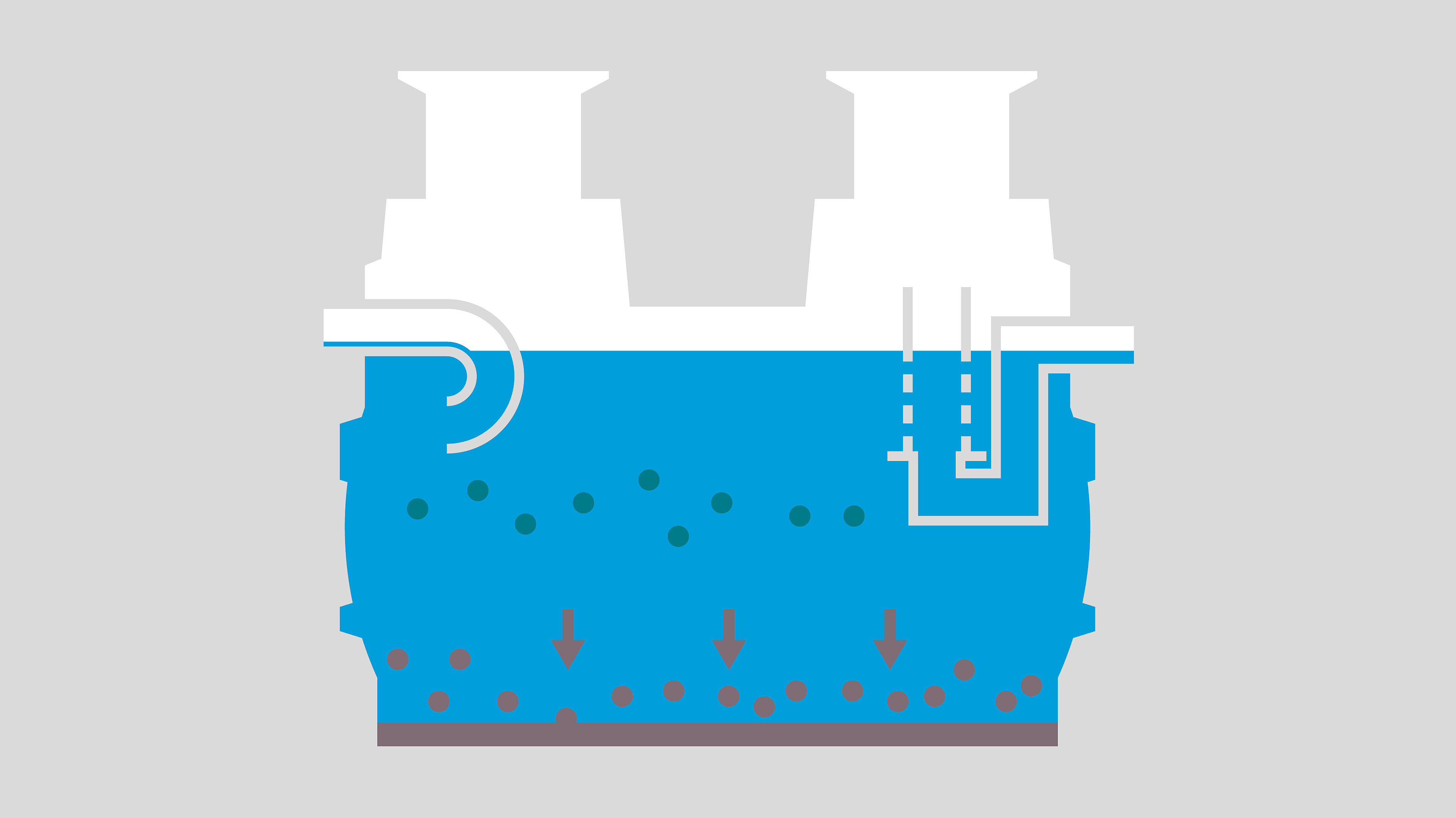
Formation of the sludge layer
In slow-flow tanks, substances that are heavier than water sink to the bottom and settle in the sludge trap.
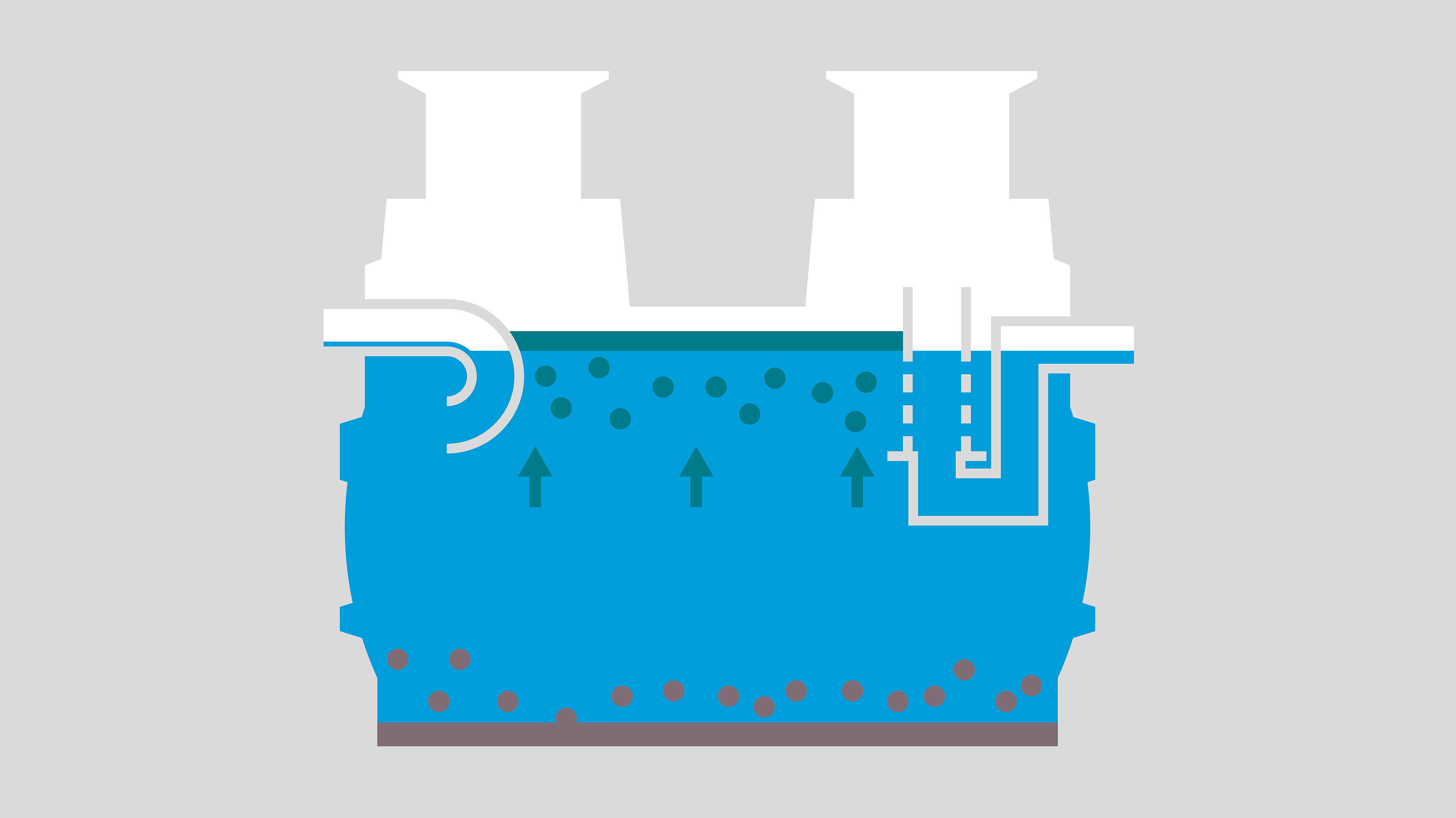
Formation of the light liquid layer
Oil and fuel rise to the top where they form a light liquid layer, which is retained in the separator.
What is the difference between system A and B light liquid separators?
System B light liquid separators (formerly class II) operate solely according to the principle of gravity. These separators are also called oil/fuel separators.
A “System A” light liquid separator (formerly class I) has an additional coalescence filter insert installed in it. The coalescence filter insert increases the performance of the separator by collecting even the smallest light liquid droplets and feeding them to the oil storage tank. Such a filter insert can also be used to subsequently convert a "System B" separator into a "System A" separator.
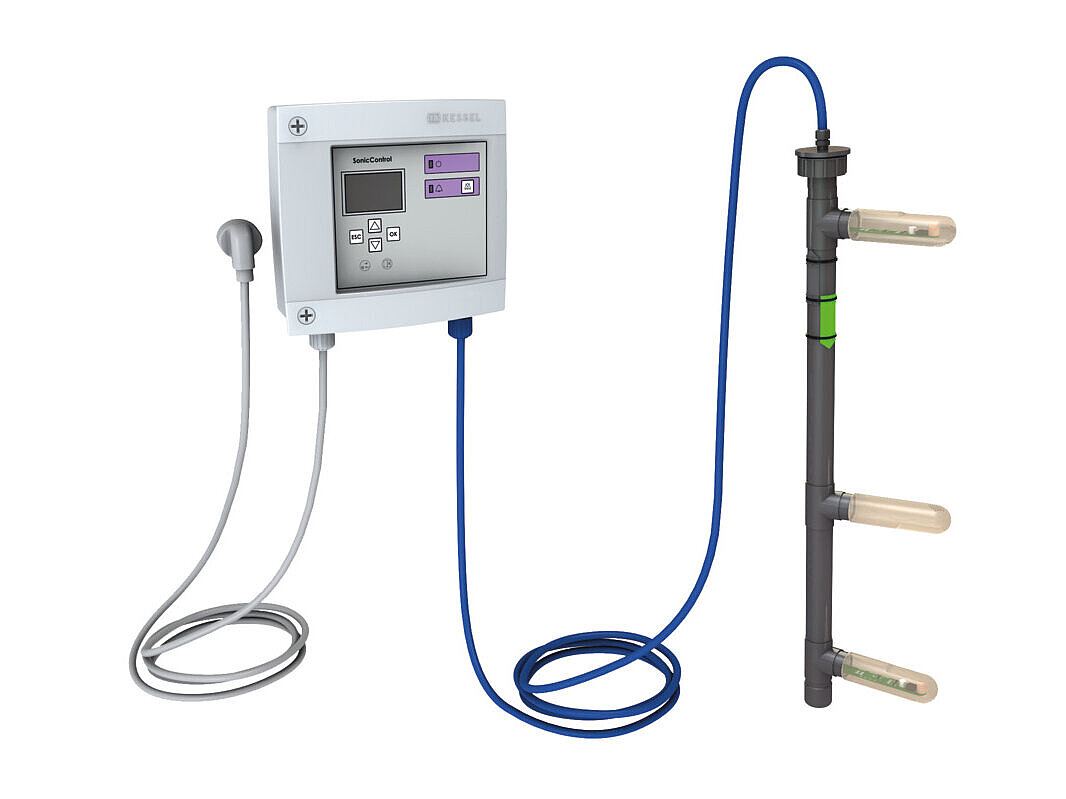
Automatic SonicControl level sensing system
The SonicControl automatic layer thickness measuring device with ultrasonic sensor undertakes the precise monitoring and reporting of the oil and sludge layer thickness in coalescence and oil/fuel separators. Owners/operating companies can verify their actual volumes of light liquids to the relevant authorities and optimise the necessary disposal cycles outside the standard requirements if necessary.

